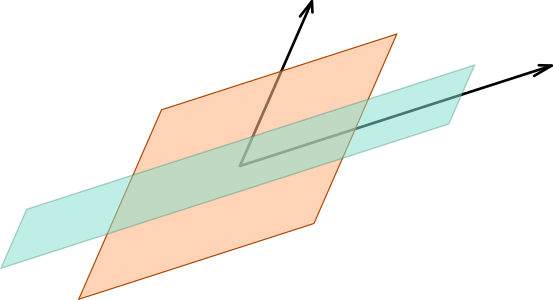

We will follow the book Linear Algebra by Friedberg, Insel and Spence (4th edition). In addition here are my shorter notes on the chapters in the book:
An after the fact short summary of each lecture. For pdf files containing the written part of each lecture look under ‘Files’ on canvas.
Thu 10 Symmetric linear transformations
Tue 8 Inner product spaces
Thu 3 Diagonalization
Tue 1 Eigenvalues and eigenvectors
Tue 24 Midterm 3
Thu 19 Cramer's rule. Determinant of the product of two matrices.
Tue 17 Determinants and row/column expansion. The cofactor matrix. Cramer's rule
Thu 12 Q&A about hwk 5.
Tue 10 Determinants.
Thu 5 The space of linear transformations . Inverses and invertibility.
Tue 3 The matrix of a linear transformation. Examples: rotations and reflections in the plane with respect to different bases. and don't have to be the same.
Thu 29 Midterm 2.
Tue 27 Review of problems 2, 5 from hwk 4. Linear transformations of to . Matrices and matrix multiplication
Thu 22 Some more facts about bases and dimensions of subspaces. Solving systems of linear equations; computational examples
Tue 20 Linear transformations: null space and range. Statement and proof of Rank+Nullity theorem. Injectivity Theorem, Bijectivity Theorem.
Thu 15 Linear transformations: definition, examples from geometry, algebra, differential operators
Tue 13 Proof by mathematical induction and a proof of the dimension theorem.
Thu 8 Bases: definition and examples in , the space of polynomials, and as a vector space over the field .
Tue 6 Midterm 1
Thu 1 Comments on the midterm, see also here. More examples of linear independence for vectors in , , and .
Tue 29: Theorem on the intersection of subspaces being itself a subspace. Linear independence: definition and examples. Definition of a basis.
Thu 24: Examples of linear combinations, span of vectors, examples in the space of polynomials. Systematically solving systems of linear equations via row reduction: examples.
Tue 22: The space of functions on an interval and the set of solutions to a linear differential equation. Linear combinations, span of a set.
Thu 17: Examples of subspaces, including lines in the plane. Proof by contradiction. Examples of using the axioms and theorems to prove that a given subset of a vector space is a linear subspace. The space of symmetric matrices. The space of polynomials of degree at most .
Tue 15: The space of polynomials; the space of trigonometric polynomials; linear subspaces.
Thu 10: Class was cancelled due to covid.
Tue 8: We discussed some first proofs of facts that follow from the Vector Space Axioms. At the end of the class I began describing new examples of vector spaces by introducing , the space of matrices with coefficients from a field . Next time we will see more examples, notably the space of polynomials, and the space of trigonometric polynomials, and function spaces.
We will then continue with linear subspaces.
Thu 3: In the first lecture I introduced the axioms of a vector space, and emphasized that you have to say which field of numbers can multiply the vectors. Then I described the examples , , and ended by noting that we can consider as a vector space where the number field is .
The goal for Tuesday is to do some first proofs and discuss more examples of vector spaces.